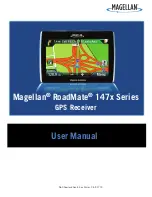
142
E-Series Networked Display Reference Manual
Maximum radar range
Maximum radar range is essentially line-of-sight, so is limited by the height of the
scanner and the height of the target as illustrated below:
The table below shows typical maximum radar ranges for various radar antenna
heights and target heights. Remember that although the radar horizon is greater than
the optical horizon, the radar can only detect targets if a large enough target is above
the radar horizon.
Factors impairing a radar picture
Not all radar echoes are produced by valid targets. Spurious echoes may be caused by:
• Side lobes.
• Indirect echoes.
• Multiple echoes.
• Blind sectors.
• Sea, rain or snow clutter.
• Interference.
Through observation, practice, and experience, you can generally detect these
conditions very quickly and use the radar controls to minimize them.
Antenna height (m)
Target height (m)
Maximum range (nm)
3
3
7.7
3
10
10.9
5
3
8.8
5
10
12.0
a
1
a
2
Earth
h
H
Cliff
Radar
D1643-3
Rmax
Rmax = 2.23 ( h + H )
Rmax
h
H
maximum radar range
radar antenna height
target height
in nautical miles
in metres
in metres
Rmax = radar horizon of antenna (
a
1
) + radar horizon of target (
a
2
)
Summary of Contents for E120W
Page 1: ...E Series Networked Display Reference Manual Document number 81244_2 Date March 2006...
Page 22: ...6 E Series Networked Display Reference Manual...
Page 48: ...32 E Series Networked Display Reference Manual...
Page 194: ...178 E Series Networked Display Reference Manual...
Page 200: ...184 E Series Networked Display Reference Manual...
Page 206: ...190 E Series Networked Display Reference Manual...
Page 226: ...210 E Series Networked Display Reference Manual...
Page 254: ...238 E Series Networked Display Reference Manual...
Page 272: ...256 E Series Networked Display Reference Manual...
Page 276: ...260 E Series Networked Display Reference Manual...
















































